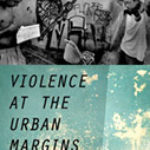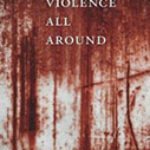White Privilege and Black Rights: The Injustice of U.S. Police Racial Profiling and Homicide

Author: Naomi Zack
Publisher: Lanham, MD: Rowman & Littlefield, 2015. 154p.
Reviewer: Peter A. Hanink | September 2016
While I was writing this review, it was announced that a grand jury in Cleveland had declined to prosecute the officer responsible for shooting Tamir Rice. Odds are by the time you read it another young Black man will have been shot and killed by a police officer. It is out of this fierce sense of urgency that Naomi Zack wrote White Privilege and Black Rights. Her short book reads more than anything else as a desperate attempt to understand the current crisis facing young Black men and the police officers who kill them.
Zack describes the focus of White Privilege and Black Rights as a narrow one: How do the injustices of the police killing of innocent young African American men work? Why are such homicides not punished? What can be done about this?
While she may describe its focus as narrow, the book’s conceptual and methodological ambit is broad, encompassing philosophy, legal analysis, history, and public policy.
The first chapter, “White Privilege, Entitlements, and Rights,” persuasively argues that the discourse that focuses on “privilege” conflates and obscures the differences between “entitlements” and “rights.” Within such a discourse, white privilege means something more like white entitlements, that is, conditional grants of preferences that sustain social, political, and economic inequality. Rights, on the other hand, refer to basic and unconditional guarantees. By conflating the two, rights are treated like entitlements, thus minimizing the import of their violation.
Zack offers the telling example of voter ID laws. By conditioning the exercise of the vote on the possession of a government issued ID, something that whites are far less likely to lack than non-whites, the right to vote is transformed into something far less than a right.
Perhaps a more fitting example, given recent events, is the killing of Tamir Rice. Rice, a Black boy, was shot while carrying a realistic-looking toy gun. As commentators have pointed out, the officer thought that Rice was an adult and Cleveland is an open carry jurisdiction. There was no clear violation of any law. While it would certainly have been appropriate to have stopped Rice and asked that he produce his permit, what troubles many is the knowledge that had Tamir been white, he would have likely escaped with, at most, a stern lecture.
In saying that the rights of whites are violated less often than the rights of non-whites due to white privilege, is to suggest that recognition of rights is a gift – that is, an entitlement – that whites give to each other. Shifting the focus to white benefit obscures the reality of non-white deprivation.
The second chapter, “Black Rights and Police Racial Profiling,” begins by distinguishing between “ideal rights” and “material rights.” While ideal rights are abstract (e.g. human rights), material rights relate to a person’s physical conditions (e.g. civil rights), such as life and safety. Zack lucidly explains that “[l]ack of recognition undermines [rights’] ideal status and lack of protection blocks their material expression.” In the U.S., ideal rights become material rights when they are enshrined in laws that the government is obligated to recognize and protect.
Pertaining to the subject at hand, the U.S. Supreme Court has held that police procedures such as investigatory stops do not violate a person’s rights as long as they are based upon a “reasonable” suspicion of criminal activity. However, when such procedures are employed in an arbitrary and discriminatory manner, they can no longer be considered reasonable. And when a particular group, such as non-white men, are disproportionately impacted by such a practice, the rights of this group have been violated in a way that the rights of whites have not.
The problem, of course, is establishing to the satisfaction of the law whether the actions of police officers are arbitrary, discriminatory, and disproportionate. As Zack herself points out, she is a philosopher, not a lawyer (nor might I add, a social scientist). As such, she relies heavily upon Judge Scheindlin’s opinion in Floyd v The City of New York – which held the NYPD’s use of investigatory stops unconstitutional –to make her case for her.
While this is all well and good, I was left feeling that she might not have bothered. In recounting the, admittedly, complex and confusing legal standards and statistical bases for the decision, Zack’s larger philosophical and theoretical arguments become muddied. This is understandable as the specifics of individual cases rarely fit neatly into general, theoretical frames.
By framing her analysis of racial profiling as a constitutional one, however, Zack risks committing the same legalistic fallacy that plagues so many first year law students. Namely, that rights violations arise from misapplication of the Constitution and thus may be redressed through the proper workings of the legal machinery.
To begin with, Floyd is an outlier. It is clear upon first glance that its approach is unusual. Scheindlin’s opinion in Floyd relies heavily upon the kinds of statistical analysis that courts are loath to employ when deciding such cases.
Courts decide individual cases based upon individual sets of facts in specific circumstances. As such, courts are ill equipped (some would say by design) to address broader societal problems. Of central importance is the legal distinction between discriminatory intentand disparate impact. The U.S. Supreme Court has repeatedly held that discriminatory intent may not be inferred merely from a finding of disparate impact. In effect, this is what Scheindlin has done in Floyd. Based upon her analysis of the statistical differences between the rates at which different groups are subjected to the practice of investigatory stops, she inferred that the NYPD had engaged in unconstitutionally discriminatory behavior.
It is quite likely that Floyd would have been reversed on appeal. However, the new mayor of New York City, Bill De Blasio, who had campaigned on a promise to limit the use of investigatory stops, declined to pursue an appeal, thus leaving Scheindlin’s decision unchallenged.
If this all seems terribly complicated and contingent, that is, of course, because it is. Recognition and protection of minority rights is, like their abnegation, political in nature. The same constitutional principles that Scheindlin relies upon in Floyd to find the NYPD’s behavior unconstitutional have, more often than not, been deployed to opposite effect.
The third chapter, “Black Injustice and Police Homicide,” begins by distinguishing between justice as an ideal and justice as a correctiveof injustice. Zack rules out ideal theories of justice as hopelessly mired in subjectivity and inextricably tied to the interests of their (usually white male) creators. In place of an ideal theory of justice, Zack offers a corrective in the form of her theory of applicativejustice.
Applicative justice is attractive in its simplicity. At heart it holds that non-whites should be treated as well as whites. Its focus is entirely empirical. Insofar as young Black men are more likely than young white men to be killed by police, young Black men are being treated unjustly.
Zack set out to understand the injustice of police killings of young Black men: how they work, why they go unpunished, and what may be done. To that end, Zack’s most compelling contribution is what may be thought of as a phenomenological account of police killings:the hunting schema. This schema situates officers and their young Black male victims into a dramatic context within which they may be understood as carrying out roles within a more-or-less scripted encounter.
Within this schema, the salient characteristics of officers are their fear (which reflects the larger society’s fear of young Black men) and their self-conception as being heroic and courageous; young Black male victims meanwhile are defined by their perceived dangerousness (which is based upon widespread shared views of Black criminality). The dramatic action of the hunting schema proceeds through three stages: procedurally-sanctioned criminal suspicion, followed by a physical confrontation, which culminates in an officer shooting the young Black male suspect.
Zack uses this schema to analyze the killings of Oscar Juliuss Grant III, Michael Brown, and Eric Garner. Unfortunately this analysis is more than a little uneven, as the facts of these cases do not fit neatly within the schema. Again, this is to be expected as individual cases are messy and their very recency makes it difficult to sift the relevant factors from the penumbral circumstances.
In the conclusion, Zack reiterates that White Privilege and Black Rights is exploratory in nature. Its presentation of theoretical distinctions – between entitlements and rights, ideal rights and material rights, and ideal and corrective theories of justice – is useful and important in understanding the current crisis.
Its greatest shortcoming is its fixation with the legal process. Killings are discussed as legal cases: the issue is presented, the constitutional standard is stated, the standard is applied to the facts, and a conclusion is drawn. Such a view is inherently limited, especially so given the influence of extralegal factors such as bias, history, and politics.
If officers kill young Black men within a hunting schema, we can little expect a legal system that is blind to such an analysis – separate as it is from the individual facts in an individual case – to change it.
As Zack notes, the legal standard governing police homicides is one of “reasonableness,” that is, would a reasonable officer fear for his life given the facts and circumstances that lead up to the killing. If fear of Black criminality is as widespread among police officers as Zack suggests, then it seems unlikely that any court would ever find such a fear to be unreasonable. It would be unusual indeed for a court to require a reasonable officer to behave differently from the majority of his fellows.
Such a critique it seems must be exterior to the legal process. One hopes that as a legal outsider, Zack continues her important contribution to such a critique.
Peter A. Hanink is a lawyer and PhD student at the University of California, Irvine. His research focuses on race and policing.


